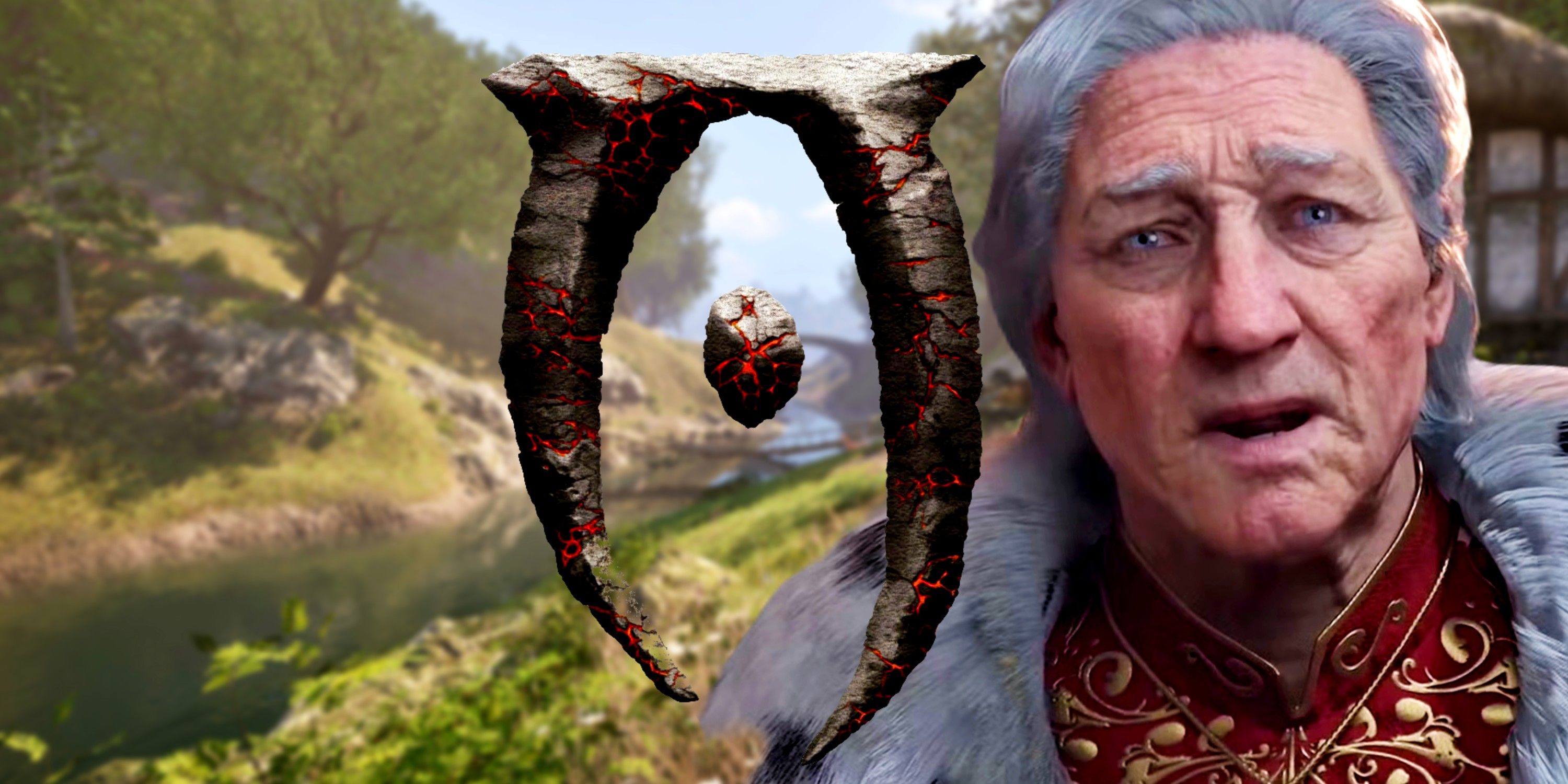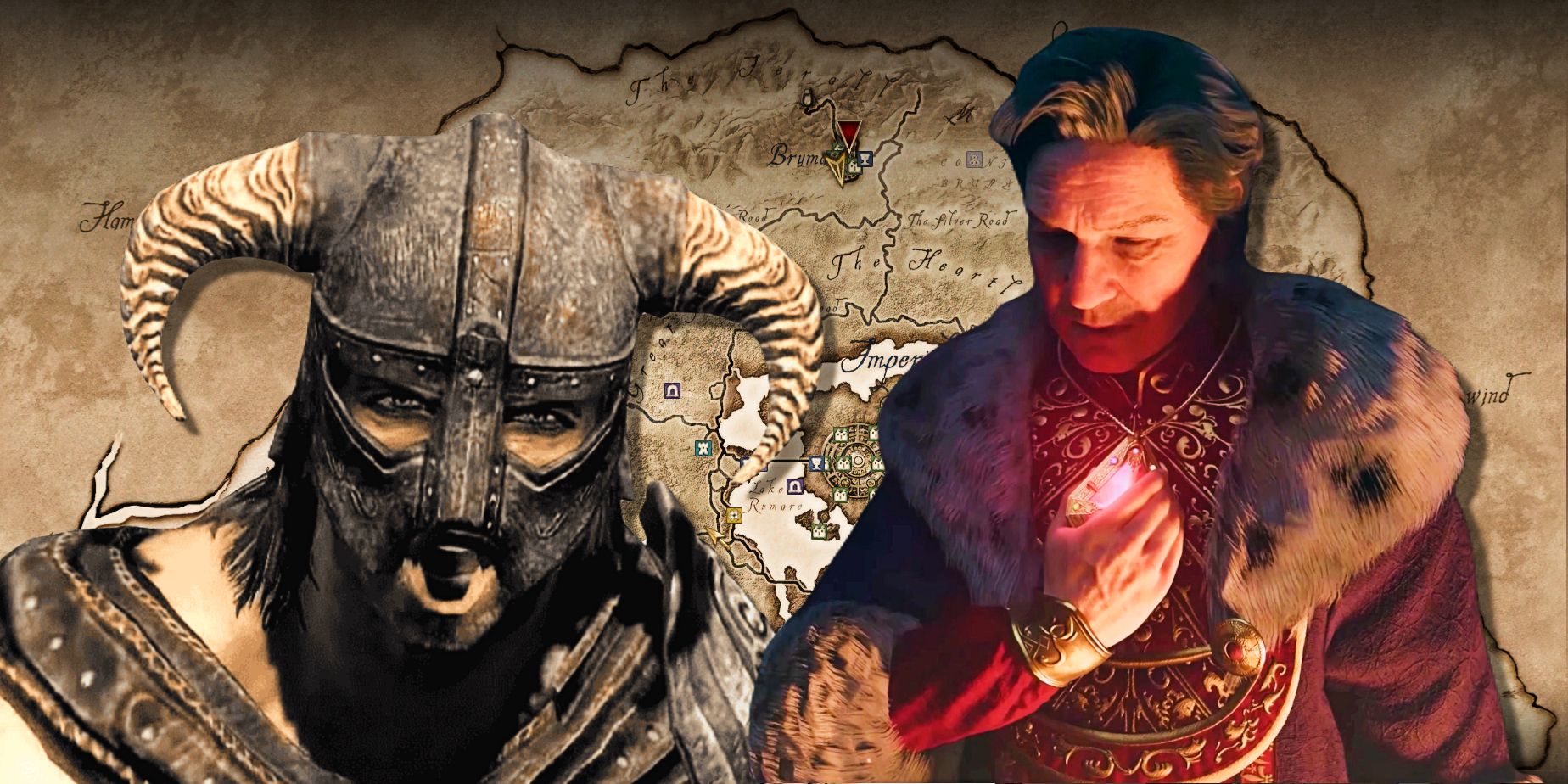[ad_1]
If you weren’t there when it originally launched, it can be hard to understand just how big The Elder Scrolls: Oblivion Remastered is today. The original Oblivion wasn’t the first open world of its kind, nor does it even come close to the biggest open world game today, No Man’s Sky. It’s arguably not even the biggest Elder Scrolls game. Still, when it first came out in 2006, it offered an unparalleled level of immersion in what seemed like an infinitely open world.
Today, many players are recapturing that magic by diving back into the world of Oblivion, while others are experiencing it for the first time. As you get lost in the rolling hills and thick forests of Cyrodiil, you may find yourself wondering just how big this world really is, and how it compares to the Elder Scrolls games that came before and after it. Here’s how Oblivion‘s map stacks up.
How Big Is Oblivion Remastered’s Map?
Measuring Cyrodiil
Like the original Oblivion before it, Oblivion Remastered’s map is estimated to include an explorable area of roughly 41 square kilometers (about 16 square miles). Oblivion‘s two DLCs, which are included in the remaster, add another 10 square kilometers (4 square miles). The base map consists entirely of the province of Cyrodiil, the seat of the Empire. Cyrodiil is located at the center of Tamriel, bordered to the north by Skyrim, to the east by Morrowind and Black Marsh, to the south by Elsweyr and Valenwood, and to the west by Hammerfell.

Related
Oblivion Remastered Lacking Mod Support Hasn’t Stopped The Mod Community
The Elder Scrolls 4: Oblivion Remastered has only been out for a day, but there are already nearly 200 mods available, despite lack of mod support.
The eastern part of Cyrodiil is centered on the Niben River, which flows from Lake Rumare in the north to the Topal Sea in the south. Its northern territory, home to the cities of Bruma, Cheydinhal, and Chorrol, consists of snowy highlands. Below is the Imperial City, situated in the midst of Lake Rumare, while Anvil, Kvatch, and Skingrad dot the valley to the east. Bravil and Leyawiin line the western bank of the Niben River to the south, while the Blackwood looms on its eastern shore.
How Oblivion Remastered’s Map Compares To Skyrim’s
Smaller In Some Ways, Bigger In Others
Mile for mile, Oblivion‘s map is slightly bigger than Skyrim‘s, which has been estimated at about 40 square kilometers (15 square miles). However, Skyrim uses a few tricks to make its map bigger. For one thing, it’s more densely populated with points of interest (caves, dungeons, et cetera). The many mountains of Skyrim also give it a lot more verticality, which means that it’s able to stack square mileage on top of square mileage, even if that’s not reflected in its overall area. At the same time, though, certain non-traversable mountains cut into the explorable area of Skyrim.
You can actually see a smal part of Skyrim in Oblivion Remastered. Travel to the northernmost part of the map, north of Bruma, and look northward to see a tall, snowy mountain in the distance – the Throat of the World.
So, it can be hard to make a direct comparison between Oblivion and Skyrim‘s map size. While Oblivion is slightly bigger by simple square mileage, Skyrim probably has it beat with its multitude of dungeons. That said, because The Elder Scrolls 4: Oblivion Remastered is much flatter, and the distance between points of interest is greater, it doesn’t feel any smaller.
[ad_2]
Source link
